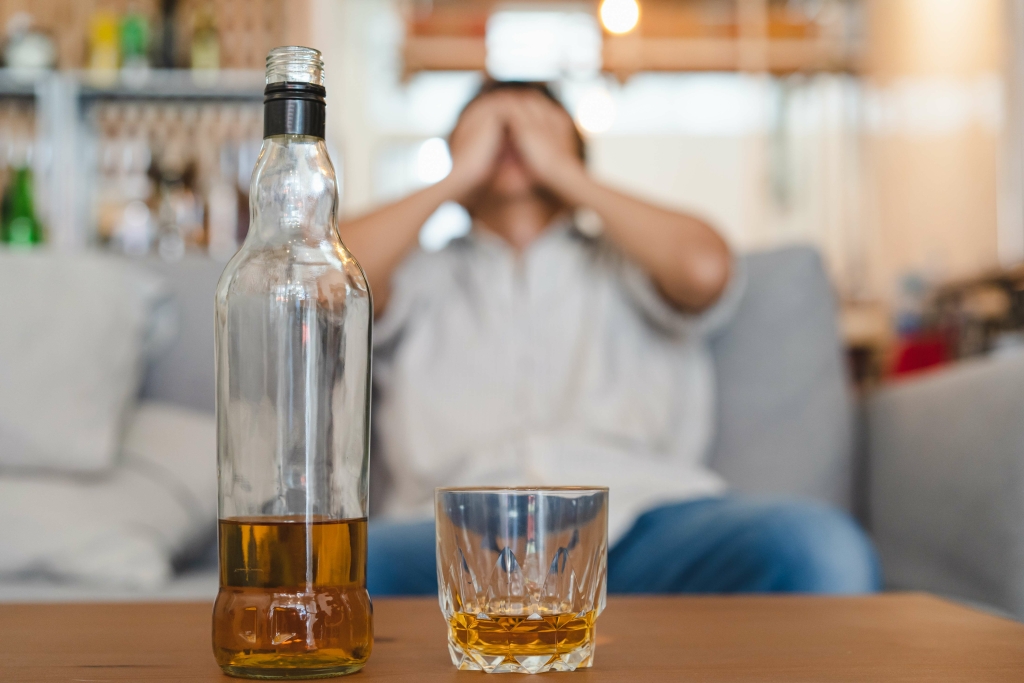Others find it painful, difficult, and frustrating, sometimes needing many attempts before achieving their goal. Still, others discover new sides to themselves during the quitting process (a greater capacity for compassion, for example). The first thing to do when you realize you have relapsed is to understand what happened. Understanding why you relapsed is often one of the most important parts of truly overcoming a substance use disorder. You can also talk to a doctor about medications that can help you cope with the symptoms of withdrawal. Other ways to prepare include deciding what approach you plan to use to overcome your addiction and getting the resources that you need to be successful.
- “A young person’s close family is almost always a key part of the solution,” Hogue says, adding that family isn’t just parents and siblings.
- Sleep hygiene is also crucial; a regular sleep schedule ensures your body and mind can recover properly.
- When these issues crop up, it is important that you can identify when you need help.
- In fact, people in recovery might be better off if the term “relapse” were abandoned altogether and “recurrence” substituted, because it is more consistent with the process and less stigmatizing.
- • Identity—shifting towards a new, positive view of oneself, one more aligned with one’s deeper values and goals, one built on self-confidence gained by acquiring new skills and new behaviors.
Use of Mobile Health Technology in Continuing Care
- The initial stages of recovery are filled with obstacles, but long-term recovery comes with its own set of challenges.
- Only 1.0 percent of people receive substance abuse treatment as an inpatient or outpatient at a specialty facility.
- Kelly co-authored a peer-reviewed study published last year that found roughly 22.3 million Americans — more than 9% of adults — live in recovery after some form of substance-use disorder.
It takes continuous commitment, which can waver at any time—particularly times of stress. In addition, addictions can sometimes mask underlying mental health problems, such as anxiety, depression, sleep disorders, and even psychosis. If you are feeling blue or agitated, or you are concerned that the world or other people seem strange or upsetting since you quit, talk with a doctor. https://ocigturizm.ru/tajskoe-pivo-nazvaniya-sorta-osobennosti-vkus-i-kachestvo/ Fortunately, most of the acute symptoms of withdrawal pass within a week or two of quitting. However, some people who quit an addiction find that certain withdrawal symptoms seem to go on and on. This is known as post-acute withdrawal syndrome (PAWS), and it can continue for weeks, months, or even years in some cases.
Harm Reduction in Addiction Recovery

By seeking professional help, building a strong support network, developing healthy habits, setting SMART goals, and understanding how to deal with relapses, you can create a fulfilling, substance-free life. The National Recovery Month webpage provides a host of resources that can be used to help promote the http://www.k2x2.info/filosofija/zdorovoe_obshestvo/p1.php observance. Relapse is common and experts see it as an opportunity for learning about and overcoming impediments to change. Some of the recovery organizations Unick and Tuten are working with are operations that are using sophisticated methods for data collection and using that evidence to influence practice, citing as one example Mosaic Community Services. There are common symptoms such as cravings, loss of control over drug use, and continued use despite bad effects on health.
Seek Social Support

This plan may include ongoing therapy, support group participation, and regular check-ins with healthcare professionals. Consistently following this plan provides structure and guidance, helping individuals navigate the challenges that may arise post-treatment. Learning how to rebuild your life after addiction is a journey filled with both challenges and triumphs.


The example set by others who have successfully traversed the recovery terrain https://rupeek.ru/en/est-li-tabletki-podobnye-omeprazola-noveishie-chem-zamenit.html can instill hope and optimism, another active recovery ingredient. Actively seeking input from peers on the path to recovery, a clinician, or both can be invaluable early on. In the first stage, precontemplation, substance users are largely unaware that their alcohol or drug use is causing problems. But to others around them, it may be very clear that substance use is costing more than just money.
For alcohol and drug addictions, it is a good idea to talk to a doctor or local drug clinic about whether you need medical help in quitting. There are options for medications to help alleviate withdrawal symptoms. In some cases, you may need medical supervision during the detox process. During the pre-contemplation and contemplation stages of change, a harm reduction approach may be helpful. Harm reduction recognizes that while total abstinence is the goal, it is a process that takes time.
Setting Realistic Goals by using the SMART tool
People may not know what paths exist, or even that a path exists at all, says Philip Rutherford, Chief Operating Officer at Faces and Voices of Recovery, who has been in recovery for 20 years and is also a member of the HEAL Community Partner Committee. This group of people with lived experience advises the NIH HEAL Initiative on research directions and ensures that research takes into consideration input from people and communities the initiative aims to benefit. Finding the right treatment option can be the key to a successful recovery journey. 2 in 3 adults who ever had a mental health problem considered themselves to be recovering or in recovery. On March 1, 2022, President Biden announced his administration’s strategy to address our nation’s mental health crisis as outlined in the 2022 Presidential Unity Agenda. To meet this goal, SAMHSA collaborated with federal, state, tribal, territorial, and local partners including peer specialists to develop the National Model Standards for Peer Support Certification.
- Cristina uses a client-centered trauma focused approach in her treatment modalities, blending evidenced based practices such as CBT and EMDR to create an individualized treatment plan to support each client’s unique needs.
- Medications like methadone, buprenorphine, and naltrexone help reduce cravings and withdrawal symptoms, making it easier to focus on recovery activities.
- A randomized study in Switzerland evaluated a continuing care intervention using text messaging to monitor self-selected drinking goals.
- People can learn to resist or outsmart the cravings until they become manageable.
Limits on virtual addiction treatment may soon return, making care harder to access
Continuing care is widely believed to be an important component of effective treatment for substance use disorder, particularly for those individuals with greater problem severity. The purpose of this review was to examine the research literature on continuing care for alcohol and drug use disorders, including studies that addressed efficacy, moderators, mechanisms of action, and economic impact. This narrative review first considered findings from prior reviews (published through 2014), followed by a more detailed examination of studies published more recently. The review found that research has generally supported the efficacy of continuing care for both adolescents and adults, but the picture is complex. Reviews find relatively small effects when results from individual studies are combined. However, continuing care of longer duration that includes more active efforts to keep patients engaged may produce more consistently positive results.
